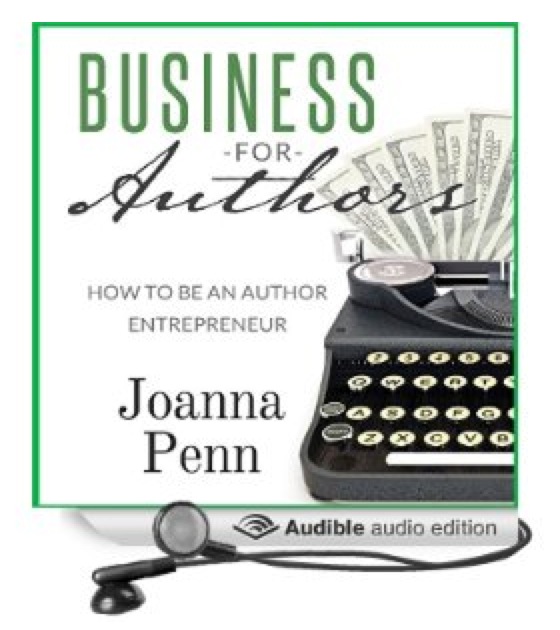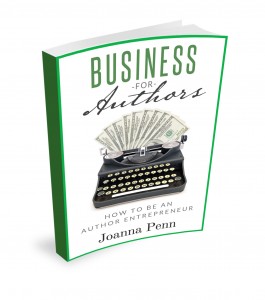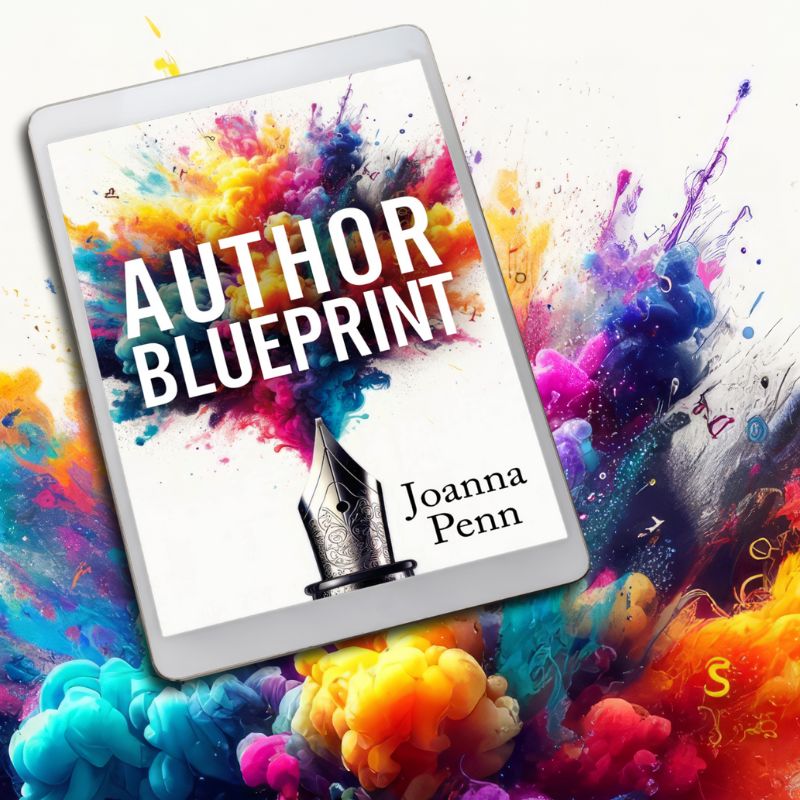 Audiobooks are a fantastic growth market for authors, narrators and producers alike, and I’ve been working with fabulous narrators for my fiction since ACX opened up in the UK in 2014.
Audiobooks are a fantastic growth market for authors, narrators and producers alike, and I’ve been working with fabulous narrators for my fiction since ACX opened up in the UK in 2014.
But as a reader, I much prefer to listen to non-fiction audio in the voice of the author themselves, so I decided to record one of my own books, Business for Authors: How to be an Author Entrepreneur. Here are the lessons I learned in the process.
This article first appeared in an edited version on the ACX blog on 31 March, 2015.
(1) Make sure you record the highest quality audio
 There are specific technical requirements to publish audio on ACX so that the customer has the best experience possible. You can reach this level of quality by recording in your own home, but only if you can get rid of the various noises that may pollute the audio, which you may not even hear anymore.
There are specific technical requirements to publish audio on ACX so that the customer has the best experience possible. You can reach this level of quality by recording in your own home, but only if you can get rid of the various noises that may pollute the audio, which you may not even hear anymore.
I’m a podcaster so I’m used to recording and editing audio, but when I listened to the sounds of my flat, I could hear planes overhead, cars going past, the rattle of someone in the garden, and the occasional yapping of a dog outside. When I tried recording, I had to keep going back and redoing sections which was a waste of time.
(2) Prepare yourself for recording
It’s surprising how tiring recording audio can be. I was exhausted after each two hour session, because it was essentially a performance. You have to put energy and expression into what you’re saying. You have to focus your eyes on the words you’ve written for an extended period.
And in a professional studio, you might be shut into a small padded box, which takes some getting used to! Here are my tips to manage yourself during the audio process.
- Schedule sessions a few days apart if you’re new at recording to ensure you have enough energy, especially if you’re an introvert like me. People can hear exhaustion in your voice, so respect your audience and make sure you’re at full strength when starting and stop before your voice begins to drop. Having a specific time scheduled will also ensure you get the recording and production done in a manageable amount of time. As a ballpark figure, it took 7 sessions of 2 hours each to get to a finished audiobook of 6.5 hours, although there was probably about 1.25 hours of raw audio per session.
- Try to avoid dairy before recording or anything that might give you excess phlegm or clog your throat. Try cleaning your teeth and create a routine so that you know your voice will be ready for speaking. If you’re ill or your voice is affected in any way, you’ll need to postpone, as one of the ACX requirements is to keep your voice at a similar level across recording sessions.
- If you’re recording around mealtimes, make sure you take a snack with you. Tummy rumbling, or borborygmi (what a lovely word!) can destroy a recording session! And from personal experience, don’t take peanut butter or anything that gives you a ‘cloggy' mouth feel.
- When you’re recording, try to modulate your breathing so you don’t end up holding your breath. I found that I needed to stop sometimes for deep breathing during longer chapters. I would definitely consider a voice coach for help with this if I was recording more often as it definitely affected my stamina. Professional actors and voice artists can
Joanna Penn in the padded recording cell 🙂 record for a much longer period as they have mastered this.
- You will need to read from a tablet or Kindle or other electronic devices since you can’t make page turning noises. Remember to turn off any wifi connection on the devices and set to Airplane mode as they can make a static noise on the audio even if you can’t hear it when recording.
- While you’re reading your book aloud, you will inevitably find things that you want to change, especially if they are things that don’t work so well in audio, for example, lists of resources that are website links. If you self-publish your books, it’s very easy to make changes. I just made a note on my Kindle of what I wanted to change and then updated my ebook file to match to ensure Whispersync would work. My friend and fellow author, Orna Ross, has changed her process to record audio before publishing the ebook as reading aloud has given her a new perspective on editing.
- One other point on changing files. I would recommend that you only record audio versions for those books which will remain static for a few years. If you have technical books, or other books that require updating annually, then it’s probably too much work to record it as you will need to change it later if you want to keep the Whispersync matching. I decided not to record How to Market a Book for this reason, as I have already done two versions in 18 months and will no doubt update it again in the future.
- Each ACX file needs to be a single chapter of the book, so make sure you record in these smaller files, rather than creating files across chapters. This will make it easier to load later. You also need to create opening and closing credits, the text of which is provided in the ACX technical notes.
(3) Learn some editing skills to keep the costs down
You can pay a producer to edit the audio files as well as record and master them, but this will make your costs per book higher, meaning less profit for the project. Since I already edit audio for my podcast, and I had high quality raw audio files, I decided to do the edits myself.
Here are some specific tips:
- If you make a mistake when recording, clap your hands so you create an obvious spike on the audio file that you can use to find the error later. If you mess up a lot, it can be easier to go back to the beginning of the paragraph to get a smooth read. Your error rate will increase as you become more tired, so make sure that you take breaks. I found that 40 minutes was the maximum time I could spend reading “in the box” before I needed a break.
- You can use free editing software like Audacity or whatever comes on your computer. Make sure that you use the Cross Fade function when cutting the file. I used Amadeus Pro on the Mac which has a Smart Edit function with auto-cross fade. I did start to get Repetitive Strain Injury (RSI) pain in my wrist during the editing process so I would recommend sorting out an ergonomic mouse and keyboard if it’s something you’re going to do regularly.
- The ACX technical requirements mean you have to add a few seconds of Room Tone at the beginning and end of the file. We recorded this separately and then I just used the pre-cut segments to top and tail each file which made the process quick and easy.
- After editing, there needs to be a QA listen to the audio to ensure all the cuts are done properly and the audio matches the book. Since I was truly sick of hearing my own voice by this stage, I employed my Virtual Assistant to do this step for me. Most of the files were fine, but there were a couple of instances where I had repeated myself without editing the error, so this QA step is crucial to avoid issues later.
- High quality audio files are very large and because you’ll be sending them back and forth, you can’t use email for this. They will also fill up your computer memory really fast. I used Dropbox as a method to send the edited files to my VA and the final files to the producer.
Would I do it again?

However, it was definitely rewarding and I will be recording other non-fiction books in the future because I think readers particularly enjoy listening to non-fiction in the voice of the creator.
It also gives the entrepreneurial author another product in their business, and if you’d like to learn more about that, check out Business for Authors: How to be an Author Entrepreneur, available now on Audible as well as in ebook and print formats. You can also find it here on iTunes.


